Apothecary News: This is the week! We are receiving the planners from the printer and will be shipping ASAP. It took a bit longer than we anticipated because the wire bindings had to be ordered, so thank you SO much for your patience as we get these out to you.
On this Hallows Eve, our autumn cross-quarter, we descend deeper into darkness. The zinnias died in their sleep last week. All is silent as a grave in the woods, except the quiet chirp of chickadees. The air has finally decided to make ghosts of our breath, like misty white spirits appearing and fading as quickly as they came.
There is a belief in ancient Slavic culture that the soul resides in the breath. Each time we exhale, we die. Each time we inhale, we are resurrected. It was a belief that reminded us that we are constantly walking this line between worlds, that we are never far from either side. We have the power to begin again each moment.
Beliefs such as this were eventually quelled over time. People were made to believe that all good things came from outside of ourselves, outside of nature. These things that seem so natural were made unclean, thus giving birth to the “witch”. This person who still abided by the laws of nature, who worshipped the power of such things, was made “other” and therefore dangerous.
The problem with the word “witch” is that it means so many different things to so many different people, that it really means nothing unless you know what it is pointing to.
~ Part of a book review for Wee Free Men by Terry Pratchett
Over time, the meanings and associations with the witch archetype shifted drastically. So as we dive deeper into the darker parts of the year, I wanted to explore this complex character and her association with nature and the plants with which she is so closely tied. There are millions of sources and opinions out there about witches, but I’ve decided to base this study around a work written in 1862 called La Sorcière by French historian, Jules Michelet. The surprisingly modern views, incredible knowledge and sarcasm of the author made this a fascinating read.
Over the next few weeks, we’ll analyze different aspects of the witch archetype to get a better understanding of how she fits into the past, present and future. I thought the best place to begin though, is with the witch as healer. What better way to express this side of the archetype than with the witch’s herbs themselves, the nightshade family (Solanaceae).
The only physician of the people for a thousand years was the Witch...the bulk of people in every state…consulted none but the Saga, or wise-woman. When she could not cure them, she was insulted, was called a Witch. But generally, from a respect not unmixed with fear, she was called good lady or fair lady (belle dame - bella donna), the very name we give to the fairies.
What we know for surest with regard to their medicinal practice is, that for ends the most different, alike to stimulate and to soothe, they made use of one large family of doubtful and very dangerous plants, called, by reason of the services they rendered, The Comforters, or Solanaceae.
A vast and popular family, many kinds of which abound to excess under our feet, in the hedges, everywhere a family so numerous that of one kind alone we have eight hundred varieties. There is nothing easier, nothing more common, to find. But these plants are mostly dangerous in the using. It needs some boldness to measure out a dose, the boldness, perhaps, of genius.
~ La Sorcière
Before we begin, I want to be clear that I do not recommend working with any of the poisonous plants mentioned. Even experienced herbalists often avoid using such herbs. Information about these plants is used solely to help us further understand the plants and the archetype of witch that is woven in with them.
While the common potato, tomato and eggplant all fall within the nightshade family, it is perhaps the belladonna (Atropa belladonna) that holds the crown. It sparks fear and curiosity as its long and storied past follows it through the centuries.
The genus name “Atropa” gives us our first clue as to its reputation. The name comes from the Greek name Atropos, referring to one of the Three Fates, or Moirai. The first fate was Clotho, who spins the thread of life. The second is Lachesis who measures the length of a human life. Finally, there is Atropos, who severs it. This comparison with the reaper of the three great Fates is a testament to the potency of belladonna.
And yet as Michelet mentions, the second half of its Latin name, “belladonna” comes from the Italian phrase meaning “good lady” or “fair lady”. While this may be a tribute to the fairies as he says, it is also said to refer to the Venetian ladies of the court who would dilate their eyes with a tincture of belladonna eyedrops to enhance their beauty.
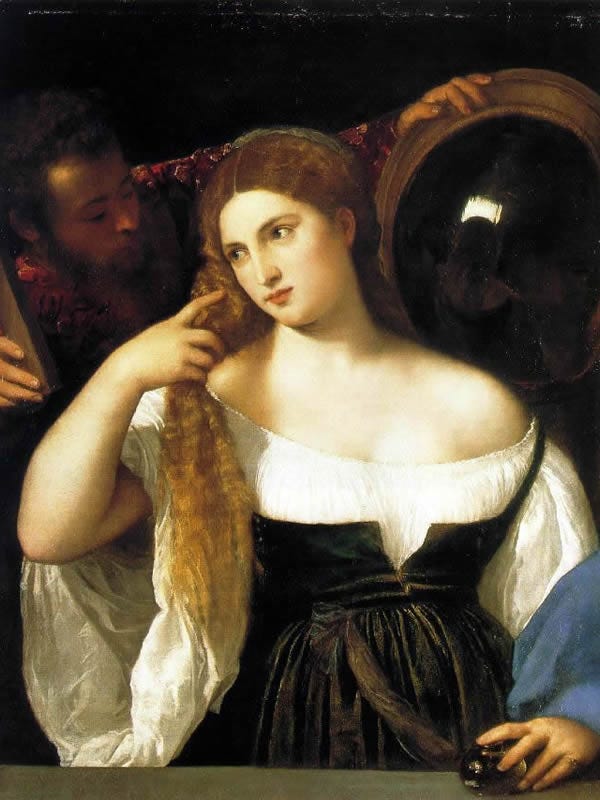
A compound within belladonna called atropine is responsible for its effect on the pupils. Still today ophthalmologists use atropine drops to dilate their patients’ eyes for exams and surgery. Atropine’s use is not limited to simple parlor tricks or doctor’s visits though. When Germany invented a deadly odorless nerve gas in WWII, atropine was found to be the only antidote to its paralyzing effects. It is also a remedy for opium and chloroform poisoning.
Modern medicine also hides belladonna as an active ingredient in insomnia medications, surgical sedation, and anti-nausea remedies.
Other highly toxic tropane alkaloids are found in belladonna such as hyoscyamine and scopolamine. When used improperly, belladonna causes delirium, rapid heart rate, vomiting, and death due to respiratory failure.
As you can see by both her name and physical properties, belladonna walks a thin line between poison and cure. Though belladonna was used as a medicinal plant for centuries, like the witch, it was cursed for its power.
Soon there came upon her the lot which still befalls her favourite plant, belladonna, and some other wholesome poisons which she employed as antidotes to the great plagues of the Middle Ages. Children and ignorant passers-by would curse those dismal flowers before they knew them. Affrighted by their questionable hues, they shrink back, keep far aloof from them. And yet among them are the comforters (Solanaceae) which, when discreetly employed, have cured so many, have lulled so many sufferings to sleep.
~ La Sorcière
The fate of the witch and her beloved belladonna are seen to a lesser extent throughout nature today. I’ve seen many people turn wary when a plant is picked right from the ground and offered to them. Is it safe? Poisonous? Clean? They would much rather trust the sterile plastic wrapped vegetables wilting in the grocery store than ingest anything growing in the dangers of the wild.
This is not to say that great care should not be taken when identifying and using wild plants, the opposite is true. Just 600 milligrams of belladonna is enough to overdose. But this instant condemnation of anything considered “other” is just as detrimental.
There are two sides to all coins. Belladonna was used as both a medicine and as a weapon. In Shakespeare’s play, Macbeth, the Scottish army defeats the Danes by poisoning their liquor with belladonna. This use of belladonna as a biological weapon has been seen throughout history, and is no doubt a great source for the fear around it. Yet, the witches of antiquity knew their true natures.
(T)he Belladonna…had great power in laying the convulsions that sometimes supervened in childbirth, and added a new danger, a new fear, to the danger and the fear of that most trying moment. A motherly hand instilled the gentle poison, casting the mother her-self into a sleep, and smoothing the infant's passage, after the manner of the modern chloroform, into the world.
Belladonna cures the dancing-fits while making you dance. A daring homoeopathy this, which at first must frighten: it is medicine reversed, contrary in most things to that which alone the Christians studied.
How did men come to this result? Undoubtedly by the simple effect of the great Satanic principle, that everything must be done the wrong way, the very opposite way to that followed by the holy people. These latter have a dread of poisons. Satan uses them and turns them into remedies. The Church thinks by spiritual means, by sacraments and prayers, to act even on the body. Satan, on the other hand, uses material means to act even upon the soul, making you drink of forgetfulness, love, reverie, and every passion. To the blessing of the priest he opposes the magnetic passes made by the soft hands of women, who cheat you of your pains.
~ La Sorcière
It is perhaps this homeopathy that Michelet speaks of that confuses people into aversion when it comes to both the witch and the belladonna. The idea that curing a poison with a poison seems contrary to every belief held by forward thinking folk.
Yet homeopathic remedies of belladonna are still used by some homeopaths to soothe a mother during labor, especially in instances when the mother is having her first child in her late 30’s or 40’s. It is also employed if the mother becomes hot, flushed and angry during labor to soothe her and ease the transition.
Remember one of its compounds, scopolamine? Up until the 1960’s, this compound was mixed with morphine to assist in easing the pain of childbirth. The concoction was commonly called Twilight Sleep and was marketed as a scientific cure to the sins of Eve and the curse all women carry because of her.
Note also Michelet’s mention of belladonna curing dancing fits. Yes you read that right. There have been instances in recorded history where folks could not stop dancing (look up the Dancing Plague of 1518). While no one knows the exact cause of such an ailment, it is believed that this is caused by stress-induced mass hysteria, which ran rampant during the Middle Ages. It would be no surprise that such a strong sedative as belladonna would remedy something so out of control.
Still, the witch and her nightshades were approached with caution. These things that live within the liminal realms between civilization and the wilds are powerful. They were to be feared, even if their potions could also cure.
You find them in ill-looking spots, growing all lonely and ill-famed amidst ruins and rubbish-heaps. Therein lies one other point of resemblance between these flowers and her who makes use of them. For where else than in waste wildernesses could live the poor wretch whom all men thus evilly entreated; the woman accursed and proscribed as a poisoner, even while she used them to heal and save; as the betrothed of the Devil and of evil incarnate…When Paracelsus, at Basle, in 1527, threw all medicine into the fire, he avowed that he knew nothing but what he had learnt from witches.
~ La Sorcière
While god-fearing folks looked upon the witch with distrust at the best, and hatred at the worst, there were some who knew the inner workings of the witch, as was proclaimed by the famous physician Paracelsus. These were not women who received instruction from the devil, or who had diabolical wishes of death upon others.
They knew the price of being labeled such a person. They knew the cost of misusing such powerful plants. This is why they would often start with the most mild plants of the nightshade family before working her way up to stronger plants if the ailment did not improve.
Early botanicals cite such plants as mad-apples (eggplants) and love-apples (tomatoes) were administered first. Then moving up the ladder of potency, these works mention herbs called poison-queller and white mullen, though I can’t be sure what modern herbs they are pointing to. Finally at the top, the witches would reach for her most powerful nightshades; henbane, datura, mandrake, belladonna. There was a method to her madness.
But if these witches who had such a close relationship with death dealing plants did not receive her instruction from the devil, then where did this knowledge come from? The answer is simple. Nature of course.
(O)ne morning of a spring-time…there takes place all around her a vast explosion of life.
And all things look at her, and all things bloom for her. For every thing that has life says softly, "Whoso understands me, I am his."
The trees, soothed by the south wind, pay her gentle homage. Each herb of the field, with its own special virtue of scent, or remedy, or poison very often the three things are one offers itself to her, saying, "Gather me."
All things are clearly in love.
~ La Sorcière
This is the key. The witch does not see the nightshades as poisoners or comforters. She sees them as living things that play an important role within all of creation. And in return, they whisper to her their secrets. Reciprocity is not an act to be undermined.
Indeed, witches of centuries past called upon belladonna in worship of Bellona (Roman goddess of war) and Hecate (Greek goddess of herbs and magic). Belladonna acted as a messenger between humans and gods to bring about visions and prophecies. In later years, this collaboration with belladonna translated into flying ointments and other household magic.
But the medical system that was emerging at the time in the Middle Ages did not account for the gentle hand of the feminine and the language that emerges from intuition. Rather, it was a practice dominated by force.
It was here especially that the Middle Ages showed themselves in their true light, as anti-natural, out of Nature's oneness drawing distinctions of castes, of priestly orders. Not only do they count the spirit noble, and the body ignoble; but even parts of the body are called noble, while others are not, being evidently plebeian. In like manner heaven is noble, and hell is not; but why? "Because heaven is high up." But in truth it is neither high, nor low, being above and beneath alike. And what is hell? Nothing at all. Equally foolish are they about the world at large and the smaller world of men.
This world is all one piece: each thing in it is attached to all the rest. If the stomach is servant of the brain and feeds it, the brain also works none the less for the stomach, perpetually helping to prepare for it the digestive sugar.
The medical art of the Middle Ages busied itself peculiarly about the man, a being noble and pure, who alone could become a priest, alone could make God at the altar. It also paid some attention to the beasts, beginning indeed with them; but of children it thought seldom: of women not at all.
~ La Sorcière
There was this obsession within the religious machine to categorize things into “good” and “bad”, “clean” and “unclean”. Within these categories, the man was considered honorable and clean, while the woman was considered the embodiment of temptation and therefore unclean. The soul, separated and no longer associated with the breath, was pure while the earthly body was sullied. Some plants were holy while others were work of the devil. Church was good, and nature, teeming with remnants of the old gods, was evil.
A line was drawn in the sand. Anything that fell on the wrong side of the line was condemned. This intangible line was the severing of the balanced duality that lived within all land-based cultures. Despite the morbid curiosity, and begrudging respect, the witch and her herbs mournfully fell on the wrong side.
The next newsletter will dive into the origins of the witch archetype and her poison plants. Their fates are inevitably intertwined.
Enjoy the remains of this liminal day.
Much love,
Val
If you want to move deeper into a seasonal land-based life, consider pre-ordering my 2024 edition of the Lunica Planner. Because learning to live in tune with the land doesn’t come from grand gestures or life-altering shifts, but rather from daily routines, devotions and observations of the land and how we relate to it.
This yearly planner weaves seasonal land-based practices with modern living so that you can live more intentionally and presently within every season of your life. It was created for the plant people, the land lovers, the gardeners, and the seekers to plan their lives around the rhythms of the earth as our ancestors have for thousands of years. More than just a planner, Lunica is a practical yet spiritual guide to living, working, gardening, and celebrating in tune with the ever-shifting world around us.
Purchasing a planner also helps support this publication!
Share this post with your plant friends!
And if you’re not already subscribed to The Medicine Garden, sign up to receive more plant love directly to your inbox. No spam, just an herbalist and gardener sharing her stories.


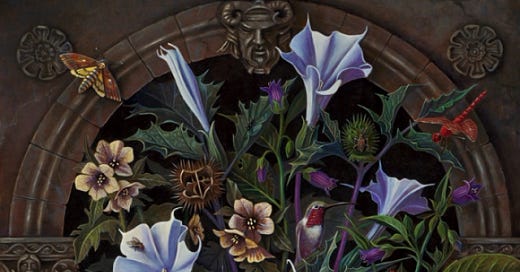



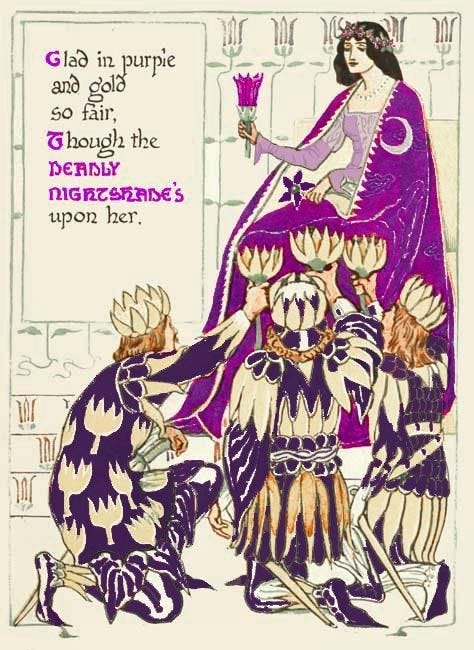
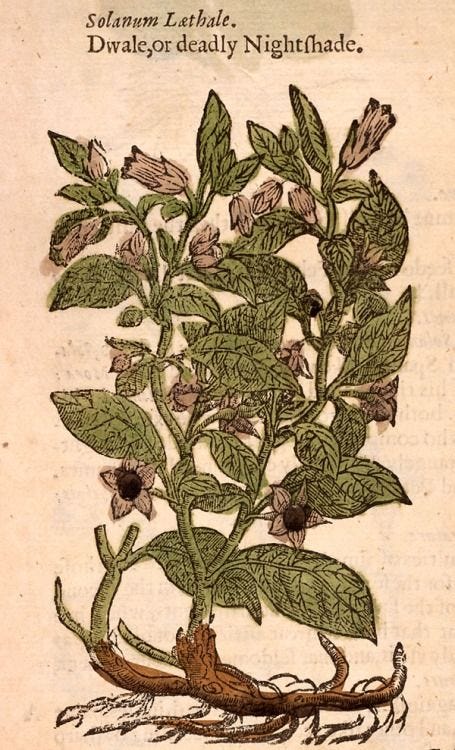
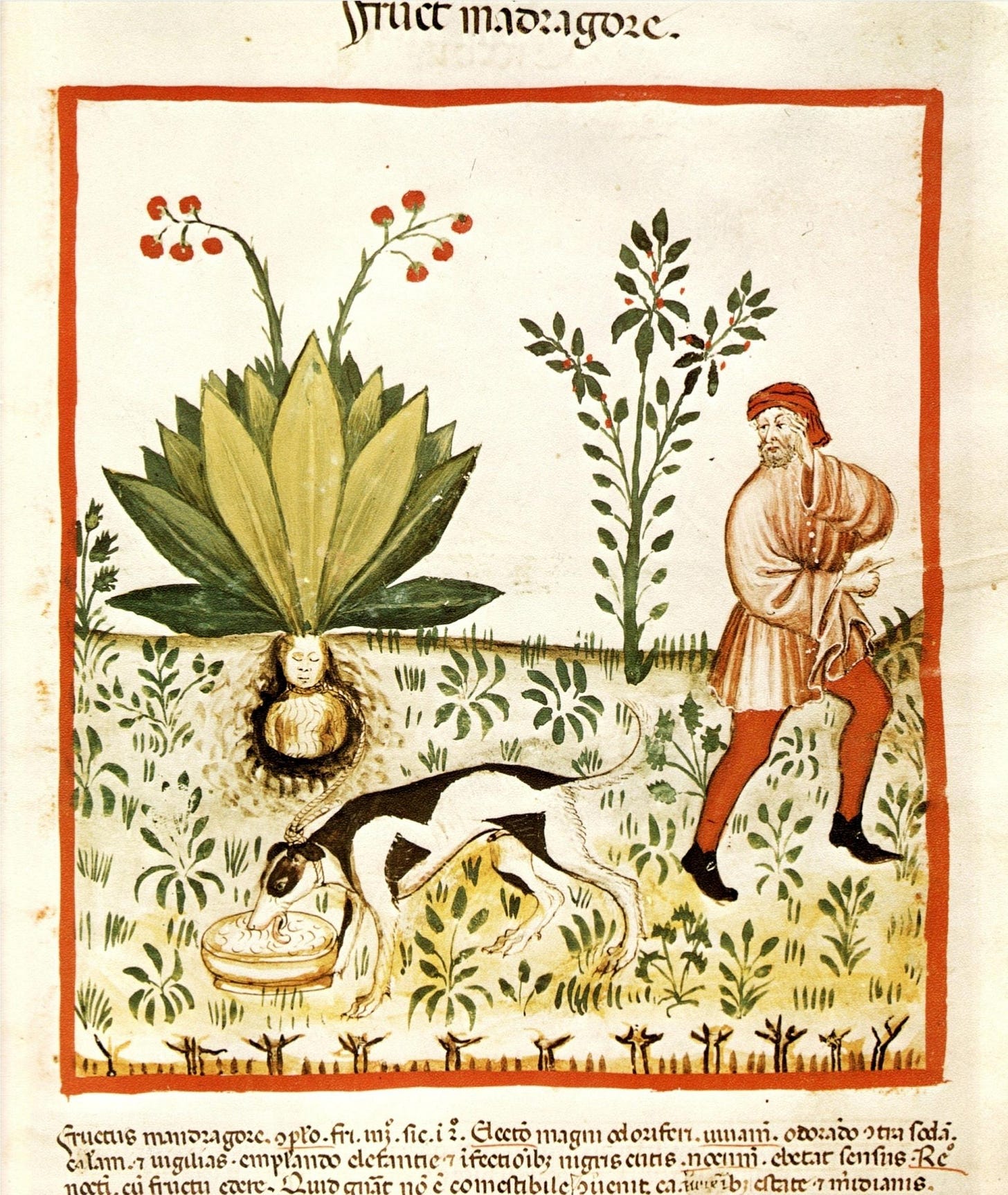
Wow, I really love this! I have this curious and kind of fearful relationship to Brugmansia and Datura. I encounter this marvelous spirit in the Amazonian tradition and always approached her very humble and with respect. She is so beautiful... And the smell of Brugmansia's trumpet flowers at nightfall are seductive like no others I've ever encountered!
I was curious if you might be interested in sharing this series of article in our monthly holistic digital magazine? It would be lovely to support your work in this way.
With love and gratitude,
Nick